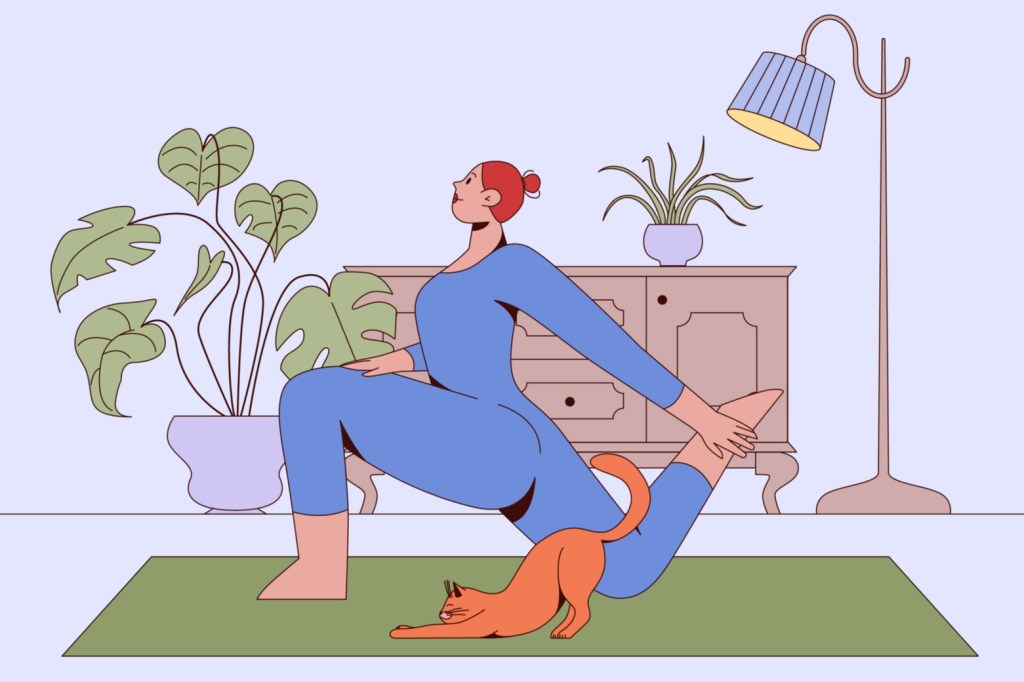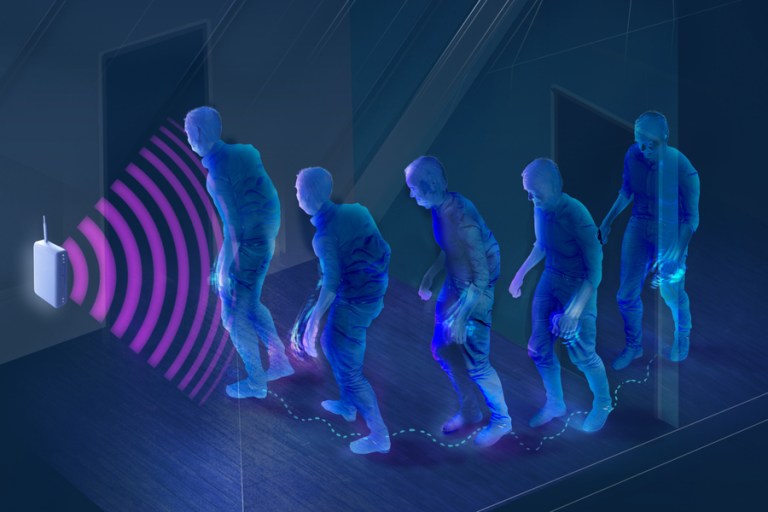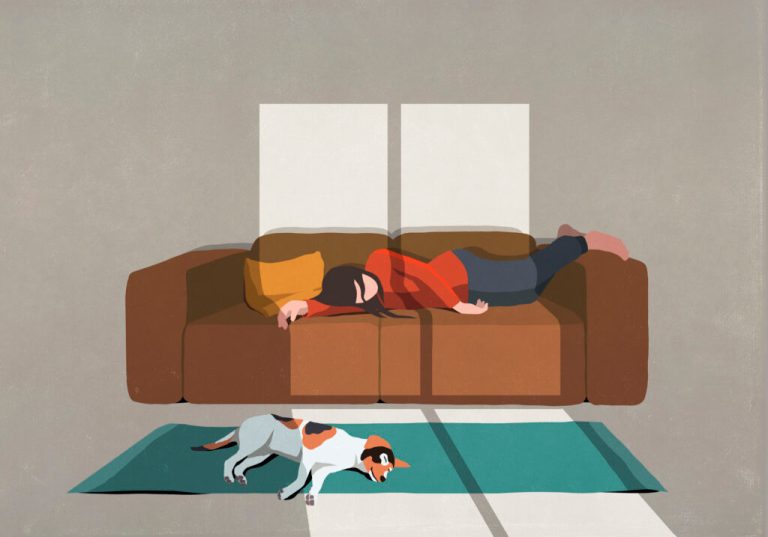It’s easy to think of stretching as merely a pre- or post-workout ritual. After all, it’s said to lengthen our muscles and loosen up our joints, which can help prevent exercise-related injuries. But stretching is such a boon for your body that it shouldn’t be limited to your weekly kickboxing class. Just a few minutes of lengthening your limbs daily can invite a bevy of benefits, improving everything from posture to blood flow.
Bonnie Strati, a certified yoga teacher, fitness coach, and master flexologist at stretching and mobility studio StretchLab, would argue that stretching is even more powerful than we think. “Stretching is one of the most accessible yet profoundly healing practices we can offer ourselves,” she told Nice News. “While it’s often thought of as something purely physical — warming up, cooling down, increasing flexibility — the truth is, it’s so much more than that. Stretching is a conversation with your body. It’s a chance to listen, soften, and return home to yourself.”
Read on to dive deeper into the physical and mental health benefits this exercise can offer, and learn four stretches from Strati that you can do at home. The best part? They take less than five minutes each.
Why You Should Loosen Those Limbs
With many of us spending hours a day hunched over our desks and devices (raise your hand if you’re slouching right now), stretching offers a welcome reprieve: the chance to break the cycle of “repetitive movement, stress, or inactivity” in your muscles and fascia (aka connective tissue), Strati points out.
“It signals the nervous system to relax hypertonic muscles and resets the resting length of overly contracted areas,” she explained. “This is especially important for chronic tension in the neck, shoulders, hips, and low back.”
Sitting for extended periods of time can lead to poor circulation, but stretching does just the opposite. “When you stretch, you gently elongate muscles and tissues, which stimulates blood vessels and increases circulation. This means more oxygen and nutrients are delivered to the muscles, joints, and fascia — fueling cellular repair, reducing soreness, and accelerating recovery,” Strati said, adding, “Blood flow is life force — stretching invites it to move freely again.”

Plus, stretching can help correct the posture imbalances many seated positions create by “lengthening what’s tight and restoring space between joints,” Strati noted. “As posture improves, so does joint integrity, breathing capacity, and functional strength. This is crucial for aging well, preventing falls, and moving with freedom — not just now but decades from now.”
There’s even some evidence that stretching may extend your lifespan. One study found that flexible physical activities were linked to a decreased mortality risk, with another suggesting that these could be used as a strategy to reduce premature death.
And aside from the physical benefits, Strati notes that stretching can boost our mental health in specific ways — and one involves letting things go. “Our bodies are like journals, holding onto every emotion, every stressor, every ‘I’ll deal with it later,’” she said. “Stretching helps us gently release what’s been stored: grief in the chest, overwhelm in the shoulders, fear in the hips.”
Research backs up the mental health pros: A 2013 study found that just 10 minutes of daily stretching over a three-month period reduced anxiety and exhaustion in participants, as well as increased their mental health and vitality levels. Another demonstrated that acute stretching improved mood and cognitive performance in otherwise physically inactive young adults.
It can also reduce the stress hormone cortisol, “especially when paired with slow breathing or mindfulness,” Strati said, adding that stretching can help balance hormones and improve sleep. This combination of activities also ignites our body’s parasympathetic branch: the “rest and digest” system that combats “fight or flight” mode. “Just 10 minutes of stretching before bed can feel like a full-body exhale — because, biochemically, it is.”
How to Start Stretching
Perfectionism can influence all areas of our life — even stretching. You might tell yourself you don’t have the time, energy, or ability to achieve the ideal flexible activity, but Strati advises ditching this limiting belief. “Don’t wait for the perfect moment; create a doable one,” she emphasized.
Limbering up can be done while brushing your teeth, steeping your tea, or even sitting at your desk: “Stretching isn’t about performing — it’s about connecting,” Strati said. “Even one intentional breath with a gentle shoulder roll is a start. What matters most is consistency, not intensity.”
Ready to get started? Strati advises dipping your toes into the seas of stretching by pairing an exercise with an activity you already do. From her four options below, choose the stretch that you need the most, and get those joints moving.
Cat-Cow (Seated or on All Fours)
For spinal fluidity, nervous system balance, and breath connection. This dynamic stretch increases mobility in the spine and helps reset the nervous system, especially when synced to our breath.
Step-by-Step (Seated Version):
1. Sit on a chair, feet flat with your hands resting on your knees.
2. Inhale: Arch your spine, lift your chest, draw your shoulders back and down, and gaze upward (cow).
3. Exhale: Round your spine, tuck your chin to your chest, and draw your belly button inward (cat).
4. Continue moving slowly with your breath, syncing each movement to your inhale and exhale.
5. Repeat for four to six rounds, or longer if desired.
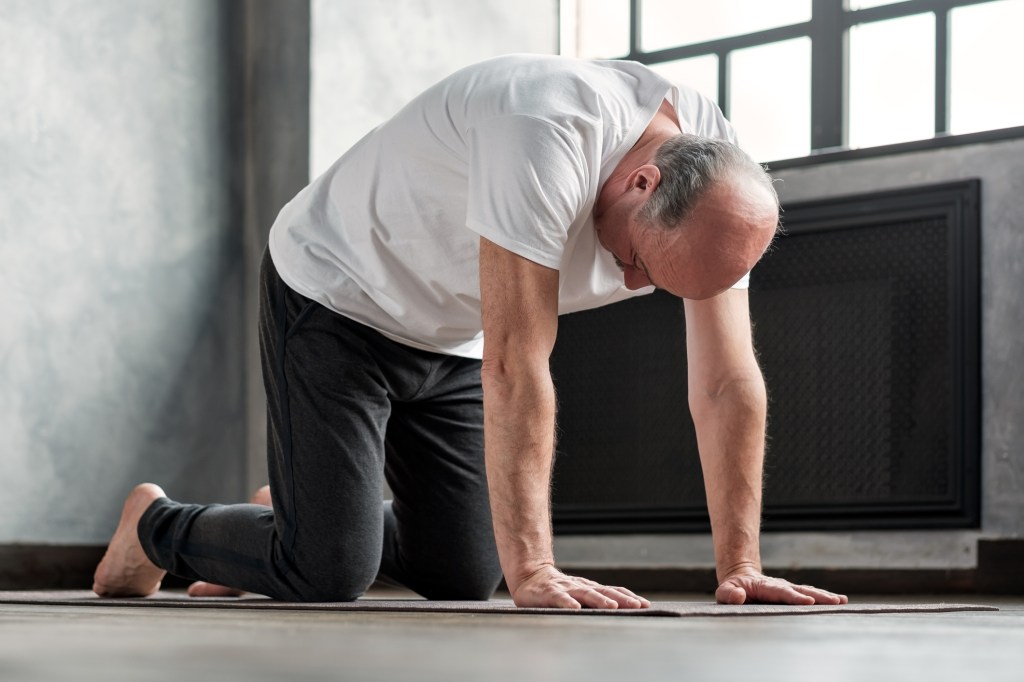
Step-by-Step (All-Fours Version):
1. Get on your hands and knees on a yoga mat or soft surface.
2. Inhale: Drop your belly, lift your chest and sit bones, and look slightly upward (cow).
3. Exhale: Round your spine, press the floor away, and tuck your chin and tailbone (cat).
4. Flow through this sequence with your breath for four to six rounds.
Coach’s note: Let this movement feel like a wave — smooth, fluid, and intuitive. This stretch is especially powerful for regulating your nervous system in times of overwhelm.
Seated Figure-4 Stretch
For hips, lower back, and emotional release. This stretch targets the piriformis and outer glute muscles, helps reduce lower back tension, and opens energetic blockages often stored in the hips.
Step-by-Step:
1. Sit on a sturdy chair, both feet flat on the floor and hip-distance apart.
2. Cross your right ankle over your left knee, creating a “figure-4” shape with your legs.
3. Flex your right foot (this protects your knee joint).
4. Sit up tall, lengthening your spine from tailbone to crown.
5. Hinge at your hips (not your waist) and slowly fold forward until you feel a stretch in your outer hip and glute.
6. Keep your chest open and your back long — not rounded.
7. Breathe slowly and deeply, holding the stretch for 30 to 60 seconds.
8. Gently return to upright, uncross your legs, and repeat on the other side.
Coach’s note: Our hips hold emotional residue — especially fear and grief. If something stirs, that’s OK. Breathe with it, not against it.
Neck & Shoulder Release
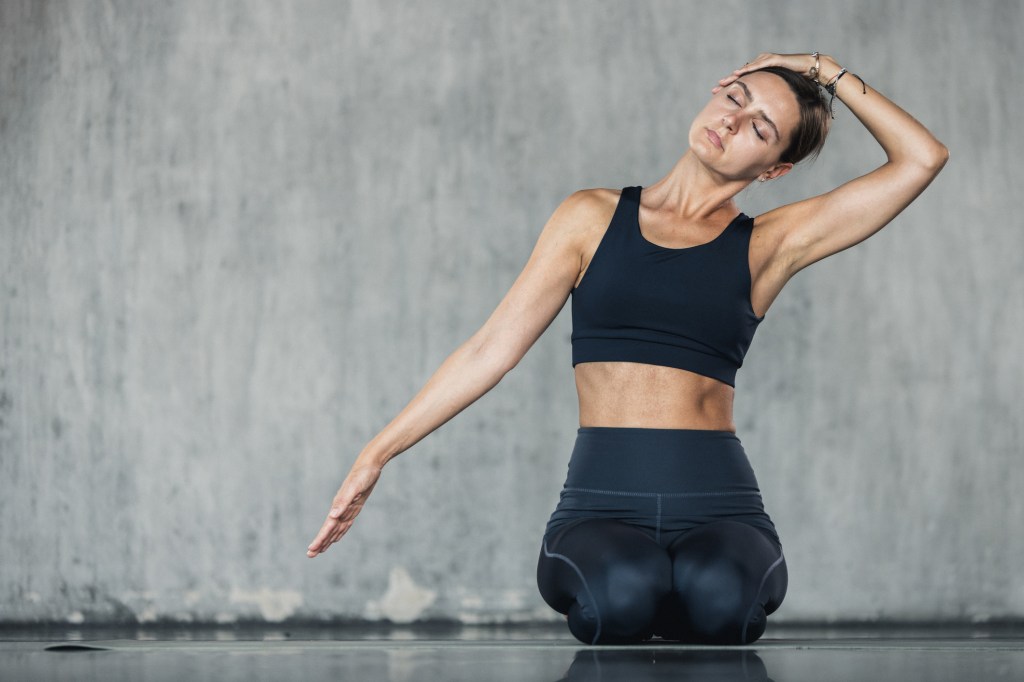
For tension, tech stress, and mental clutter. This gentle stretch eases strain in the neck and upper traps, particularly after long hours at your desk or staring at your screen.
Step-by-Step:
1. Sit or stand comfortably with your spine tall and shoulders relaxed.
2. Slowly tilt your head to the right, bringing your right ear toward your right shoulder.
3. Keep your left shoulder relaxed and heavy, avoiding lifting it.
4. To deepen the stretch, rest your right hand gently on the side of your head. Don’t pull — just let gravity assist.
5. Extend your left fingertips downward, or place your hand on your thigh for extra grounding.
6. Hold for 20 to 30 seconds, breathing slowly and deeply.
7. Return to center and repeat on the left side.
Coach’s note: So many of us carry the weight of responsibility here. This stretch is a gentle invitation to release what’s not yours to hold onto.
Bonus: Supine Twist
For digestion, detox, and emotional release. This restorative twist gently compresses the digestive organs, improves spinal mobility, and supports emotional surrender. It’s a beautiful way to wind down at the end of the day or release tension after a long period of stillness or stress.
Step-by-Step:
1. Find a comfortable place to lie on your back — preferably a yoga mat, soft rug, or even your bed.
2. Gently hug both knees into your chest. Feel your lower back soften into the surface beneath you.
3. Extend your arms out to the sides in a “T” shape, your palms facing up (or place them in a cactus/goal-post shape if space is limited).
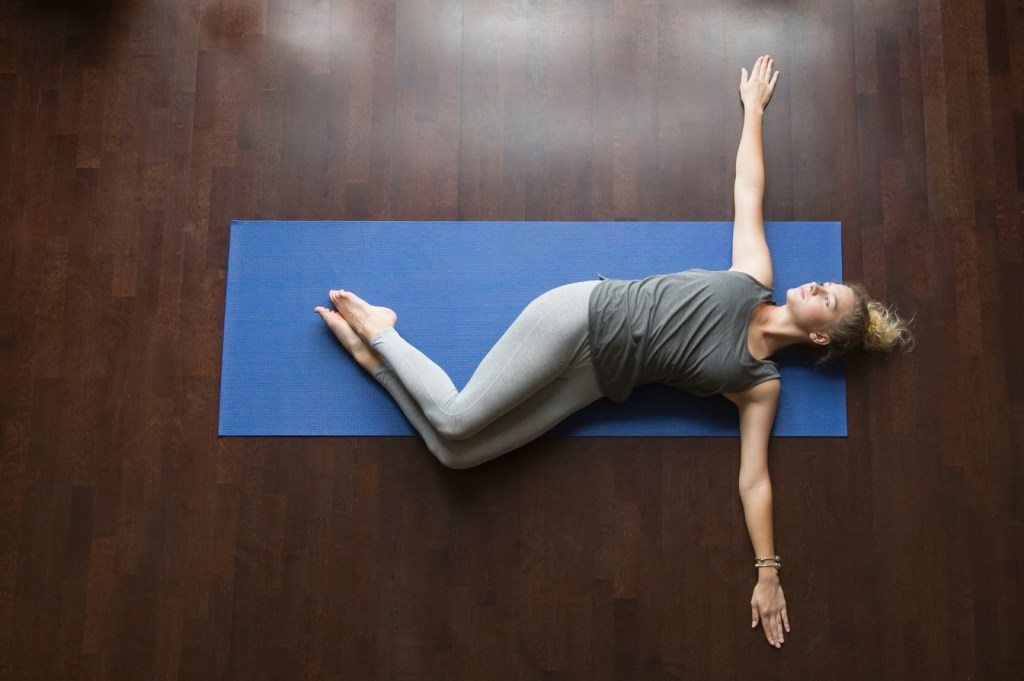
4. Take a deep inhale. While exhaling, slowly let your knees drift over to the right side of your body. Keep your shoulders relaxed and grounded. If your knees don’t touch the floor, you can place a pillow or blanket underneath them for support.
5. Gaze softly over your left shoulder, but only if it feels OK for your neck.
6. Hold for 30 to 60 seconds, breathing deeply into your belly and side ribs.
7. With your next inhale, use your core to bring your knees gently back to center.
8. Exhale, letting your knees drop to the left. Gaze to the right, then hold for another 30 to 60 seconds.
9. Return to center. Hug your knees in, take one final deep breath, and slowly roll to your side to come out of the stretch.
Coach’s note: This twist isn’t just for the body — it’s for the soul. It invites you to let go of expectations, old emotions, or anything that no longer serves you. Let your exhale be your release.
RELATED: With “Exercise Snacking,” You Can Boost Your Fitness Without Hitting the Gym
